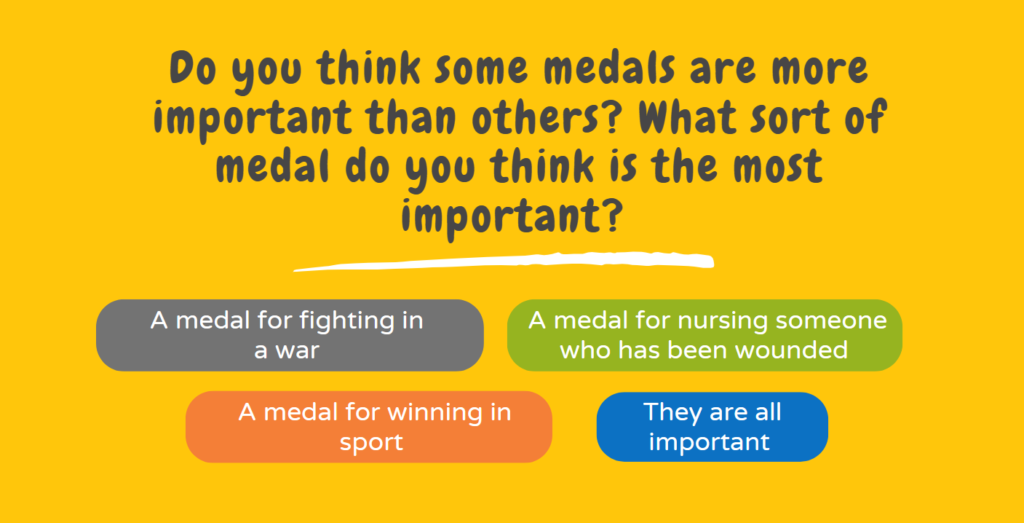Rosie explores some of the ways that she’s used questions as hooks at the start of learning resources and workshops.
What is a hook and why does it matter?
A hook is an engaging or intriguing element designed to capture a person’s attention right at the beginning. It can be a compelling line, a mysterious situation, or anything that creates curiosity or triggers an emotional response
*
*
What are the benefits of using a hook?
A good hook can create excitement and engagement. As humans, we are naturally drawn to the unknown or unexpected, or something that piques our curiosity. Ideally, we’d want to use a hook to introduce a question, a mystery, or a compelling situation that forces our learners to engage.
Then, listeners keep listening or engaging in order to satisfy their curiosity. Ideally, hooks trigger a thought process too – so the process becomes less about the facilitator and more about the learner.
What are the barriers to using hooks?
We know that hooks work, but often we don’t use them. The point of a hook is that it sends an immediate signal that this is going to be a great day or session. It’s supposed to be right at the start.
Too often, we start a school trip, workshop or tour with a (boring) introductory talk that gives practical information like where the toilets are or what our name is. This information is important, but it’s not engaging. It can often switch off learners with short attention spans and set the tone for the day. Effectively, you can lose your learners right at the start because you’re talking too much.
But, if our purpose is first and foremost to engage a group of learners, when writing our session plans, I’d encourage you to consider if any of that can wait. If we are about to lead a workshop, could we hook our young learners with something dramatic or exciting before we tell them our name? Can we use a hook before we give them the practical information about the day?
Could we create something to be puzzled over before they hang up their coats – so that they come back from the changing area wanting to know more, rather than hovering around distracted by other things they’ve encountered.
There’s nothing to stop us then saying, hi, I’m Rosie and this is x museum, but could that come after we’ve hooked them? On session plans, try writing in space for a hook before the intro talk.
If you are giving a tour for the public, some of your learners will be there early. Could you plan an early bird task to hook and engage them whilst they wait– it could be written on a board, picked out of a cauldron or handed out in secret envelopes as appropriate
Practical examples of hooks in museum resources
Questions are a great way to hook. Rhetorical questions have been used as a device for thousands of years because they create a connection – they force us to internalise and relate the topic to our own thoughts and views. I prefer questions where the listener actually gets time to engage in the answer, rather than questions just for rhetoric.
I love to use questions at the start of learning resources and as a way to begin tours and talks. I try to write questions that spark curiosity by being genuinely interesting, or by drawing on the learners’ prior experiences so that they can relate to the topic.
..

Here are some examples of questions from a set of interactive story resources that Rosie created for www.museumofthehighlands.org in 2023.
In order to access the next part of each story, readers can discuss and select an answer to each question
This question introduces an interactive story about Nurse Janet Adams. You can find the whole resource here. This question is a little bit controversial and potentially emotive. How do you choose between the options? Using emotions helps make things memorable.

This next question introduces the story of a Highland jewel thief. It intrigues us immediately because it introduces the topic of secrecy. It will also help the learners to form a connection with the jewel thief and see her as a human being who shares our emotions.

This question introduces the story of John Cobb who attempted to set a record for speed on Loch Ness. It forces us to think about the motivations of someone who has attempted world records by thinking about whether we’d like to. A follow up question asked more details about the types of records the learners would be most interested in.

Finally, this tricky question challenges participants to empathise with a situation that many of us face from time to time – giving and receiving bad news. It helps make a remote story, about the Highland Clearances, much more relatable as it introduces an important historic figure.

MM
When I plan I often have the space on my session plan at the start for a really intriguing question – especially one that makes you think. They’re one of my favourite hooks to draw learners in.